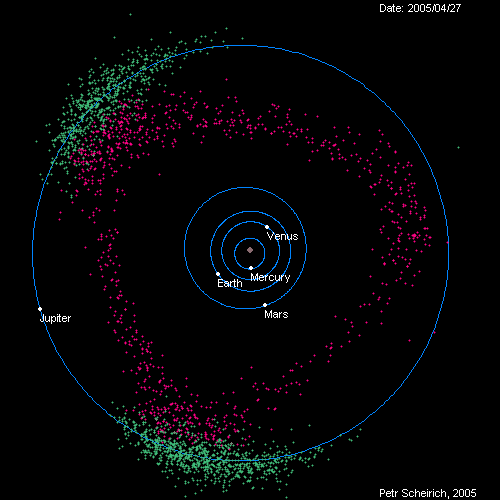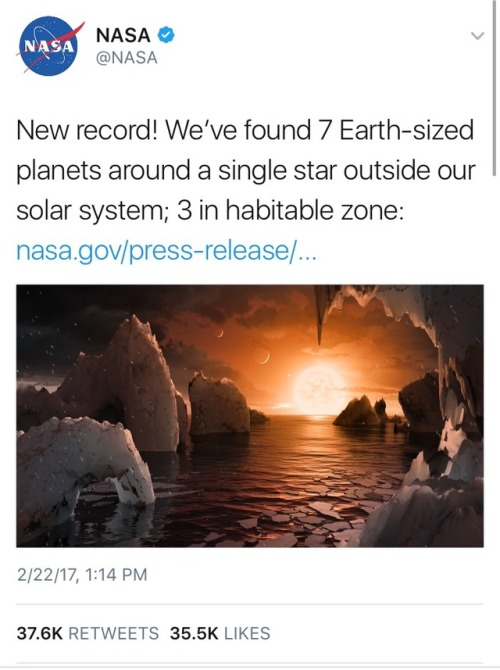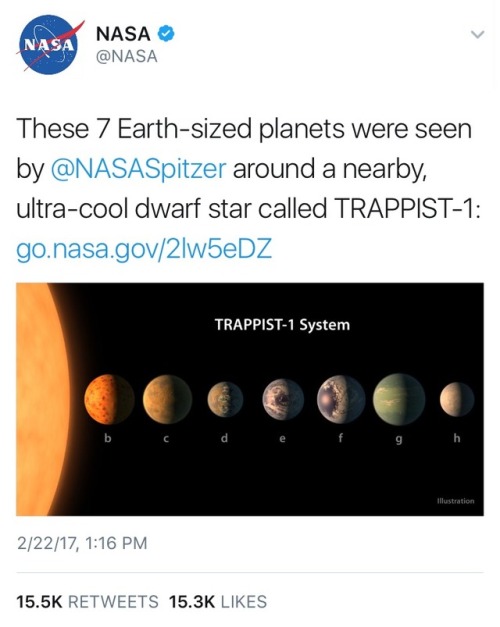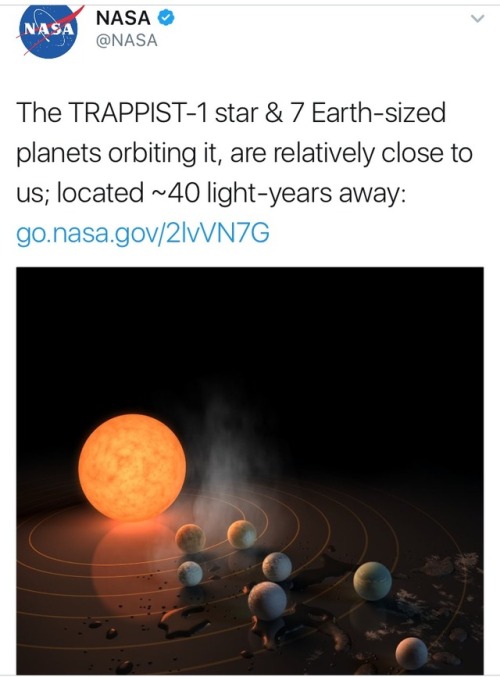Does The Name “Pavlov” Ring Any Bells?
Does the name “Pavlov” ring any bells?
More Posts from Science-is-magical and Others




TYPES OF COLOR-BLINDNESS
1. Normal vision
2. Deuteranopia
3. Tritanopia
4. Monochromacy - An extremely rare type of color-blindness in which sufferers can see only in shades of grey, and perceive no color at all. About 1 in 33,000 people is born with this condition.
(Source)


It’s officially starry scholastic month!
Planet X starts off with a quick science fact!
Planet X’s first lesson will be posted tonight!
Today’s starry Fact: Niku
http://www.popularmechanics.com/space/deep-space/a22293/niku-weird-object-beyond-neptune/

Saturn: Oh you wanted a twist?







Better late than never!
Here’s a comic about Cosmic Strings!
https://www.space.com/9315-cracks-universe-physicists-search-cosmic-strings.html
https://www.sciencedaily.com/releases/2008/01/080120182315.htm
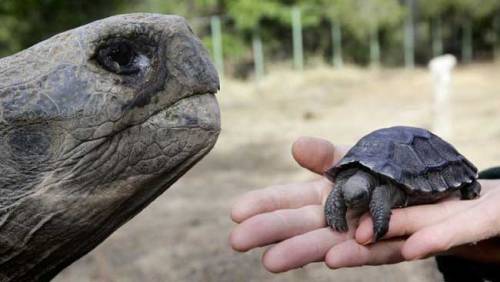
Baby Tortoises Show Up In The Galapagos For The First Time In Over A Century
There hadn’t been one single baby tortoise sighting in more than a century on the Galapagos Island of Pinzon, until a small group of the tiny, shelled youngsters were spotted this year.
The recent births are helping to pull the critically endangered animals back from the brink of extinction after they were nearly laid to waste as a result of human activity.
This is huge news for a species that has been struggling to survive for a century, relying on humans raising young tortoises bred in captivity until they are large enough to not fall prey to rats and predators.

Possible case for fifth force of nature
A team of physicists at the University of California has uploaded a paper to the arXiv preprint server in which they suggest that work done by a team in Hungary last year might have revealed the existence of a fifth force of nature. Their paper has, quite naturally, caused quite a stir in the physics community as several groups have set a goal of reproducing the experiments conducted by the team at the Hungarian Academy of Science’s Institute for Nuclear Research.
The work done by the Hungarian team, led by Attila Krasznahorkay, examined the possible existence of dark photons - the analog of conventional photons but that work with dark matter. They shot protons at lithium-7 samples creating beryllium-8 nuclei, which, as it decayed, emitted pairs of electrons and positrons. Surprisingly, as they monitored the emitted pairs, instead of a consistent drop-off, there was a slight bump, which the researchers attributed to the creation of an unknown particle with a mass of approximately 17 MeV. The team uploaded their results to the arXiv server, and their paper was later published by Physical Review Letters. It attracted very little attention until the team at UoC uploaded their own paper suggesting that the new particle found by the Hungarian team was not a dark photon, but was instead possibly a protophobic X boson, which they further suggested might carry a super-short force which acts over just the width of an atomic nucleus - which would mean that it is a force that is not one of the four described as the fundamental forces that underlie modern physics.
The paper uploaded by the UoC team has created some excitement, as well as public exclamations of doubt - reports of the possibility of a fifth force of nature have been heard before, but none have panned out. But still, the idea is intriguing enough that several teams have announced plans to repeat the experiments conducted by the Hungarian team, and all eyes will be on the DarkLight experiments at the Jefferson Laboratory, where a team is also looking for evidence of dark photons - they will be shooting electrons at gas targets looking for anything with masses between 10 and 100 MeV, and now more specifically for those in the 17 MeV region. What they find, or don’t, could prove whether an elusive fifth force of nature actually exists, within a year’s time. [Image][Continue Reading→]
Newborn baby brain scans will help scientists track brain development
Scientists have published ground-breaking scans of newborn babies’ brains which researchers from all over the world can download and use to study how the human brain develops.

(Image caption: Diffusion MRI of the developing neonatal brain (Left: Multi-shell high angular resolution diffusion data decomposed into a free water component (greyscale background image) and a directionally resolved brain tissue component shown as rendered surfaces. Middle and right: Visualisation of anatomical connections in the developing brain derived from the brain tissue component.)
The images are part of the Developing Human Connectome Project (dHCP), a collaboration between King’s College London, Imperial College London and the University of Oxford, which will uncover how the brain develops, including the wiring and function of the brain during pregnancy and how this changes after birth. The dHCP researchers are sharing their images and methods online so that other scientists from around the world can use the data in their own research.
Using Magnetic Resonance Imaging (MRI) scanners at Evelina London Children’s Hospital, the team has developed new techniques which enable images of the brains of foetuses and babies to be captured. Researchers have overcome problems caused by babies’ movement and small size, as well as the difficulties in keeping vulnerable infants safe in the MRI scanner, so that they can now produce highly detailed and rich information on brain development.
The project will help scientists to understand how conditions such as autism develop, or how problems in pregnancy affect brain growth.
‘The Developing Human Connectome Project is a major advance in understanding human brain development - it will provide the first map of how the brain’s connections develop, and how this goes wrong in disease,’ said Lead Principal Investigator, Professor David Edwards from King’s College London and Consultant Neonatologist at Evelina London.
The research collaboration is funded by a €15 million Synergy Grant from the European Research Council, and one of the goals of the project is to make sure that the data is shared as widely across the world as possible. Scientists are able to download the images at https://data.developingconnectome.org.
For this project, Professor Jo Hajnal’s team at King’s College London developed new MRI technology specifically designed to provide high resolution scans of newborn and fetal brains.
In addition, a group led by Professor Daniel Rueckert’s at Imperial College London developed new computer programs to analyse the images. 'We have been developing novel approaches that help researchers by automatically analysing the rich and comprehensive MR images that are collected as part of dHCP,’ he explained.
At the University of Oxford, Professor Steve Smith’s team has been developing specific techniques to define where the connections are in the developing brain.
As well as studying more babies, the team at Evelina London are now recruiting pregnant mothers for foetal scanning. Meanwhile, the first release of images today will allow scientists to start to explore these powerful images and begin mapping out the complexities of human brain development in a whole new way.
-
 ladyadiaa reblogged this · 6 years ago
ladyadiaa reblogged this · 6 years ago -
 ladyadiaa liked this · 6 years ago
ladyadiaa liked this · 6 years ago -
 ducklingsimulator reblogged this · 6 years ago
ducklingsimulator reblogged this · 6 years ago -
 gogetyrshovel liked this · 6 years ago
gogetyrshovel liked this · 6 years ago -
 kentuckyfried-panda reblogged this · 6 years ago
kentuckyfried-panda reblogged this · 6 years ago -
 kentuckyfried-panda liked this · 6 years ago
kentuckyfried-panda liked this · 6 years ago -
 kuroken-lovechild reblogged this · 6 years ago
kuroken-lovechild reblogged this · 6 years ago -
 kuroken-lovechild liked this · 6 years ago
kuroken-lovechild liked this · 6 years ago -
 tired-eyes-fairy-lights liked this · 6 years ago
tired-eyes-fairy-lights liked this · 6 years ago -
 alec-isnt-your-bitch reblogged this · 6 years ago
alec-isnt-your-bitch reblogged this · 6 years ago -
 thelifeofabookwormthings reblogged this · 7 years ago
thelifeofabookwormthings reblogged this · 7 years ago -
 thelifeofabookwormthings liked this · 7 years ago
thelifeofabookwormthings liked this · 7 years ago -
 sacks-of-kittans reblogged this · 7 years ago
sacks-of-kittans reblogged this · 7 years ago -
 ultimatemomfan liked this · 7 years ago
ultimatemomfan liked this · 7 years ago -
 holyshetalia reblogged this · 7 years ago
holyshetalia reblogged this · 7 years ago -
 holyshetalia liked this · 7 years ago
holyshetalia liked this · 7 years ago -
 butter-triangles reblogged this · 7 years ago
butter-triangles reblogged this · 7 years ago -
 red--opti reblogged this · 7 years ago
red--opti reblogged this · 7 years ago -
 red--opti liked this · 7 years ago
red--opti liked this · 7 years ago -
 kristoffthecub reblogged this · 7 years ago
kristoffthecub reblogged this · 7 years ago -
 cfsev reblogged this · 7 years ago
cfsev reblogged this · 7 years ago -
 allforlove-and-cats liked this · 7 years ago
allforlove-and-cats liked this · 7 years ago -
 kennbow reblogged this · 7 years ago
kennbow reblogged this · 7 years ago -
 vexatious-knight reblogged this · 7 years ago
vexatious-knight reblogged this · 7 years ago -
 vexatious-knight liked this · 7 years ago
vexatious-knight liked this · 7 years ago -
 brian-david-goblin reblogged this · 7 years ago
brian-david-goblin reblogged this · 7 years ago -
 brian-david-goblin liked this · 7 years ago
brian-david-goblin liked this · 7 years ago -
 asususasa liked this · 7 years ago
asususasa liked this · 7 years ago -
 skitlit liked this · 7 years ago
skitlit liked this · 7 years ago -
 greenwoodthegreat reblogged this · 7 years ago
greenwoodthegreat reblogged this · 7 years ago -
 cottonidea liked this · 7 years ago
cottonidea liked this · 7 years ago -
 therosiestwinter liked this · 7 years ago
therosiestwinter liked this · 7 years ago -
 strengthme reblogged this · 7 years ago
strengthme reblogged this · 7 years ago -
 ceramicwings liked this · 7 years ago
ceramicwings liked this · 7 years ago -
 sierrrav-blog reblogged this · 7 years ago
sierrrav-blog reblogged this · 7 years ago
